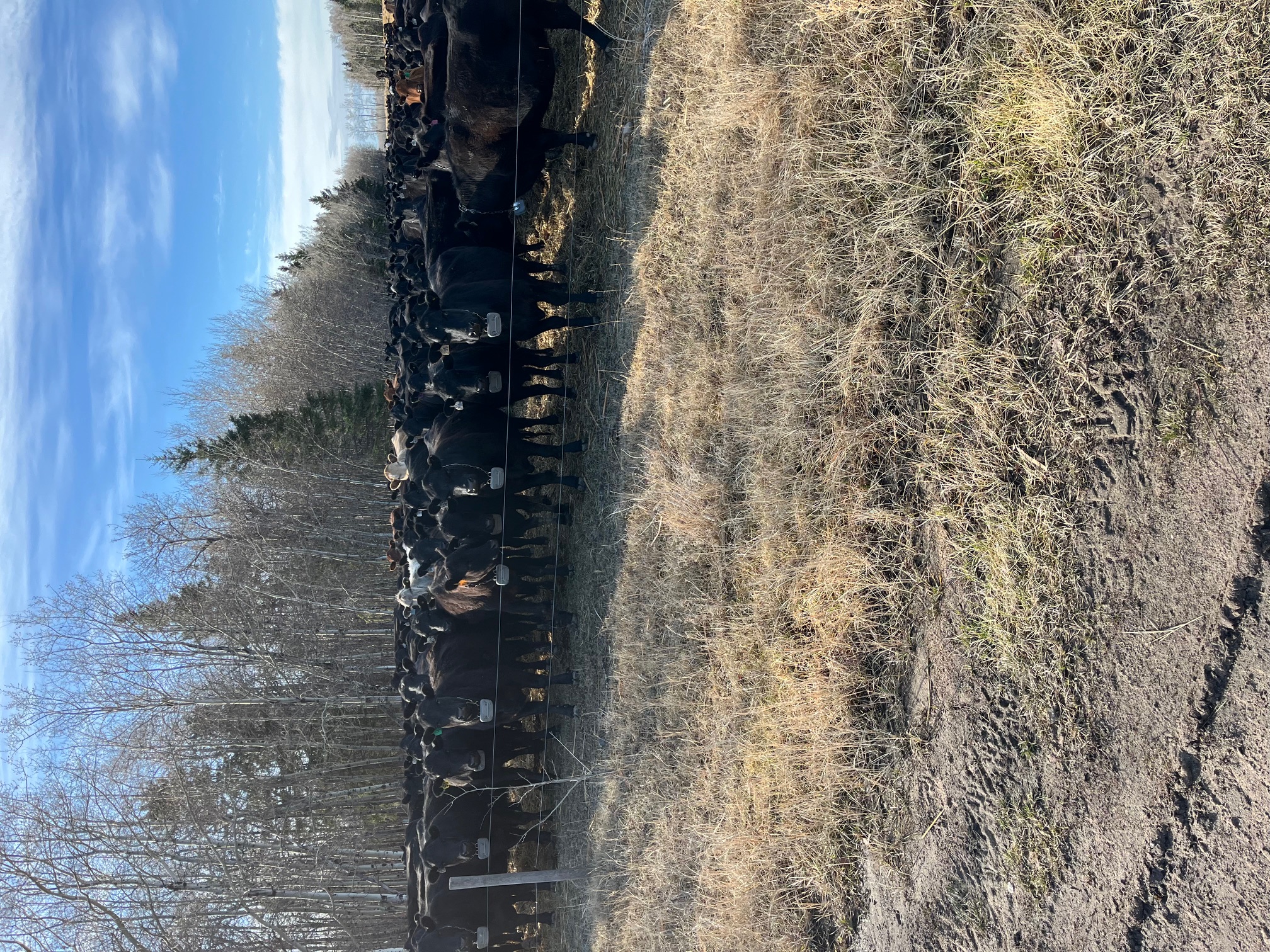Site Background
About the location
The CJ Ranching Demonstration Site is located approximately 20 kilometres north of Debden, Saskatchewan within the mid-boreal upland ecozone. This ecozone stretches from northwestern Ontario into the foothills of the Rocky Mountains in Alberta. The region experiences short cool summers with average temperatures of 13°C to 15.5°C and cold winters with average temperatures ranging of -13.5°C to -16°C. Average annual precipitation is 400 to 550 millimetres in this sub-humid mid-boreal ecoclimate.
This area is part of the mixed coniferous and deciduous boreal forest extending across the northern parts of the Western Prairies and into Ontario. The forest supports a diverse range of species, including trembling aspen, balsam poplar, white and black spruce and balsam fir. The understory varies, with shrubs and herbs in the deciduous areas while feathermoss is prevalent in the coniferous sections.
The demonstration site is in the Grey Wooded Soil Zone, consisting predominantly of loam-textured Grey Luvisolic soils. Additionally, significant areas of Podzol and Organic soils are found near the demonstration site, with Gleysols and Mesisols occurring in poorly drained areas throughout the mid-boreal upland ecozone. The topography is moderately rolling to hilly, providing ample habitat for native wildlife including moose, white-tailed deer, elk, black bear, timber wolf, lynx, snowshoe hare, beaver, loon and red-tailed hawk.
About the Ranch
John and Deanne Chuiko own and operate CJ Ranching with their children, Matt and Rylee. It consists of owned, rented and leased land. The home quarter is the original homestead of John’s grandfather and grandmother, established in 1941. This ranch runs both cow/calf and long-yearling operations where they use and build forage genetics, based on mimicking mother nature as best as possible.
This ranch has numerous successes under their belt from years of holistic planned grazing including increased grazing days per acre, the emergence of new plant species in paddocks where they were never planted, increased carrying capacity, greater drought tolerance and increased forage production.
Learning about Rotational Grazing
The Chuikos interest in holistic grazing was sparked many years ago by an article in Canadian Cattleman magazine by Don Campbell. They began using electric fence and moving cattle but initially didn’t fully understand the benefits behind these practices.
In 2016, they took their first holistic management course which helped them to develop and implement a grazing plan. Today, they have a better understanding of soil function and how important recovery time is. John and Deanne committed to moving their cattle to the right place, at the right time, for the right reasons.
Rotational Grazing Objective
John and Deanne say, "Our vision of our future resource base includes abundant biodiversity of plants and animals with healthy, functioning ecosystems. From this thriving, diverse healthy soil, we want to grow as much of our own nutrient-rich food as we can to feed our family."
Project Details
The Chuikos have partnered with the Saskatchewan Ministry of Agriculture, the Saskatchewan Stock Grower’s Association, VENCE and the Canadian Forage and Grassland Association (CFGA) to implement rotational grazing using virtual collars – GPS enabled electric collars for cattle. VENCE sought a location to test their virtual collars and the Chuikos’ leased land provided the perfect environment. They manage 56 quarters of heavily forested rangeland leased from the Ministry of Agriculture. Their experience has shown that the cattle tend to graze the open areas, fence lines, trails and clearings before moving into the forest. Once the grass begins to regrow in the open areas, the cattle will return, leading to overgrazing. The implementation of VENCE technology is expected to improve grazing distribution.
Building fences in a forested area can be quite challenging, requiring bulldozing to clear fence lines and ongoing maintenance, especially after severe weather. Additionally, using temporary fencing in such a vast area is impractical. The VENCE virtual collars allow the Chuikos to manage their cattle remotely by creating and adjusting paddocks from their computer. These changes are transmitted to the base station and then relayed to the individual collars. In such a heavily forested area, the need for additional base stations was evident as the signal can be quite poor. This technology will hopefully improve grazing efficiency and promote land health.

Funding for this project in part has been provided by Agriculture and Agri-Food Canada through the Agricultural Climate Solutions – On-Farm Climate Action Fund.
